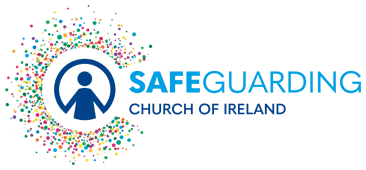ROI Adult Safeguarding
SECTION D: Definitions
Jump to section:
Safeguarding Vulnerable Persons at Risk of Abuse – National policy and procedures 2014, have established the following definitions for practice in the statutory, independent and community and voluntary sectors.
The risk of harm occurs in all communities irrespective of age, gender or socio-economic status. Many adults at risk regularly come into contact with our church family and community whether that be through Sunday worship; pastoral visiting; organisations providing activities for both children and families and individual adults. There are times when those in ministry meet adults at times of crisis and trauma or sometimes they recognise that something is not quite as it appears. A supportive conversation may enable some elements of disclosure of domestic abuse; financial abuse; emotional or other forms of harm. Those in ministry are well placed to support adults at risk and empower them to make choices about how to keep themselves safe by minimising their own exposure to the risks that are present in their lives.
Therefore it is important that those in ministry understand what constitutes abuse of adults who are at risk of harm. By understanding the nature of abuse and recognizing possible indicators
of harm, those in ministry will be in a more informed position to support and guide individuals to seek advice and information to change their circumstances should they wish to do so. While statutory services provide necessary protection responses, community and voluntary sector organisations are also well placed to provide specialist supports to alleged victims of harm and abuse. Likewise it is important to recognise the value of the spiritual counselling the Church can provide to adults at risk or adults in need of protection in the adult safeguarding process.
Definition of Abuse
Abuse may be defined as any act, or failure to act , which results in a breach of a vulnerable person’s human rights, civil liberties, physical and mental integrity, dignity or general well being, whether intended or through negligence, including sexual relationships or financial transactions to which the person does not or cannot validly consent, or which are deliberately exploitative. Abuse may take a variety of forms.
The main forms of abuse are:
Physical Abuse
Physical abuse includes hitting, slapping, pushing, kicking, misuse of medication, restraint or inappropriate sanctions.
Sexual Abuse
Sexual abuse includes rape and sexual assault, or sexual acts to which the vulnerable person has not consented, or could not consent, or into which he or she was compelled to consent.
Psychological Abuse
Psychological abuse includes emotional abuse, threats of harm or abandonment, deprivation of contact, humiliation, blaming, controlling, intimidation, coercion, harassment, verbal abuse, isolation or withdrawal from services or supportive networks.
Financial or Material Abuse
Financial or material abuse includes theft, fraud, exploitation, pressure in connection with wills, property, inheritance or financial transactions, or the misuse or misappropriation of property, possessions or benefits.
Neglect and Acts of Omission
Neglect and acts of omission includes ignoring medical or physical care needs, failure to provide access to appropriate health, social care or educational services, the withholding of the necessities of life such as medication, adequate nutrition and heating
Discriminatory Abuse
Discriminatory abuse includes ageism, racism, sexism, that is based on a person’s disability, and other forms of harassment, slurs or similar treatment.
Possible signs – the person not receiving the care services they require, their carer being overly critical or making insulting remarks about the person, the person being made to dress differently from how he/she wishes.
Spiritual Abuse
Spiritual Abuse including denying access to sacraments and to the practice of their faith.
Possible signs – person not receiving sacraments, being absent from liturgies. (Please note that these signs do not necessarily mean that abuse is definitely taking place)
Institutional Abuse
Institutional abuse may occur within residential care and acute settings including nursing homes, acute hospitals and any other in‐patient settings, and may involve poor standards of care, rigid routines and inadequate responses to complex needs
Each individual set of circumstances will require a professional HSE assessment to determine the appropriate response and consider if any underlying factors require a protection response.
This list of types of harmful conduct is neither exhaustive, nor listed here in any order of priority. There are other indicators which should not be ignored. It is also possible that if a person is being harmed in one way, he/she may very well be experiencing harm in other ways.
Related Definitions
There are related definitions which interface with Adult Safeguarding, each of which have their own associated adult protection processes in place.
Domestic Violence and Abuse
Domestic violence or abuse is ‘threatening, controlling, coercive behaviour, violence or abuse (psychological, virtual, physical, verbal, sexual, financial or emotional) inflicted on anyone (irrespective of age, ethnicity, religion, gender, gender identity, sexual orientation or any form of disability) by a current or former intimate partner or family member’. Domestic violence and abuse is essentially a pattern of behaviour which is characterised by the exercise of control and the misuse of power by one person over another. It is usually frequent and persistent. It can include violence by a son, daughter, mother, father, husband, wife, life partner or any other person who has a close relationship with the victim. It occurs right across society, regardless of age, gender, race, ethnic or religious group, sexual orientation, wealth, disability or geography.
The response to any adult facing this situation will usually require a referral to specialist services. Specialist services will then decide if the case needs to be referred to a HSE for action under the safeguarding procedures.
Human Trafficking / Modern Slavery
Human trafficking/modern slavery involves the acquisition and movement of people by improper means, such as force, threat or deception, for the purposes of exploiting them. It can take many forms, such as domestic servitude, forced criminality, forced labour, sexual exploitation and organ harvesting. Victims of human trafficking/ modern slavery can come from all walks of life; they can be male or female, children or adults, and they may come from migrant or indigenous communities.
The response to adults at risk experiencing human trafficking/modern slavery will always be to report the incident to the Garda.
Hate Crime
Hate crime is any incident which constitutes a criminal offence perceived by the victim or any other person as being motivated by prejudice, discrimination or hate towards a person’s actual or perceived race, religious belief, sexual orientation, disability, political opinion or gender identity.
The response to adults at risk experiencing hate crime will usually be to report the incident to the Garda.
Who might abuse
This could be anyone who has contact with the vulnerable person. It could be a partner, spouse, child, relative, friend, advocate, informal carer, a member of the clergy or religious order, a healthcare, social care or other worker, a peer or, less commonly, a stranger.
Domestic/Familial Abuse
This is the abuse of a vulnerable adult by a family member such as partner, son, daughter, sibling or extended family member.
Professional Abuse
The misuse of power and abuse of trust by professionals, the failure of professionals to act on suspected abuse/crimes, poor care practice or neglect in services, resource shortfalls or service pressures that lead to service failure and culpability as a result of poor management systems.
Possible forms of professional abuse include:
- Entering into inappropriate relationships with a vulnerable adult
- Failure to refer disclosure of abuse
- Poor, ill-informed or outmoded care practice
- Failure to support a vulnerable adult to access health/care treatment
- Denying a vulnerable adult access to professional support and services such as advocacy
- Inappropriate response to challenging behaviours
- Failure to whistleblow on issues when internal procedures to highlight issues are exhausted
Peer Abuse
This is the abuse of one vulnerable adult by another vulnerable adult within a care setting. It can occur in group or communal settings, such as day care centres, clubs, residential care homes, nursing homes or other institutional settings.
Stranger Abuse
A vulnerable adult may be abused by someone who they do not know such as a stranger, a member of the public or a person who deliberately targets vulnerable people.
Definition of a Vulnerable Person
The National Vetting Bureau (Children and Vulnerable Persons) Act 2012-2016 defines Vulnerable Adult as follows:
“Vulnerable Person” means a person, other than a child, who:
- a) is suffering from a disorder of the mind, whether as a result of mental illness or dementia,
- b) has an intellectual disability,
- c) is suffering from a physical impairment, whether as a result of injury, illness or age, or
- d) has a physical disability, which is of such a nature or degree as to restrict the capacity of the
person to guard himself or herself against harm by another person, or that results in the person requiring assistance with the activities of daily living including dressing, eating, walking, washing and bathing.

